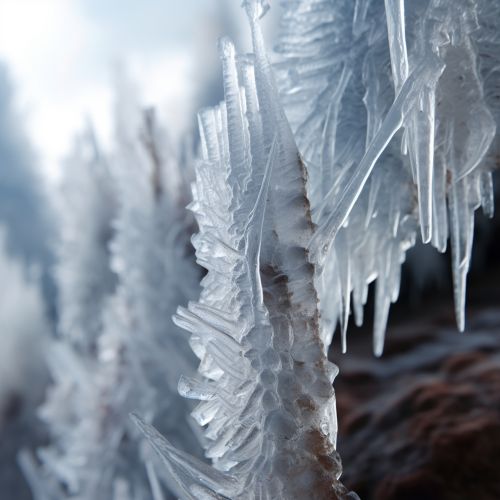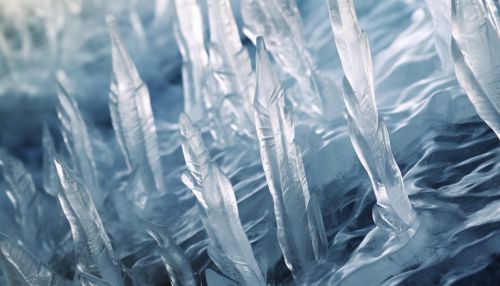Frazil ice
Introduction
Frazil ice is a type of ice that forms in open, turbulent water. It is characterized by small, loose, needle-like structures or thin, flat plates. Unlike other forms of ice, frazil ice does not form on the water's surface; instead, it forms in the water column and rises to the surface. The formation of frazil ice is a complex process influenced by a variety of factors, including water temperature, air temperature, wind speed, and water turbulence.


Formation
The formation of frazil ice begins when the temperature of the water drops below the freezing point. This supercooled water remains in a liquid state until some form of disturbance, such as turbulence, causes the water molecules to form into ice crystals. These crystals are initially very small, often only a few millimeters in diameter, and can be either disc-shaped or needle-like in structure. As these ice crystals are carried along by the water's current, they can collide and adhere to each other, forming larger clusters of frazil ice.
Characteristics
Frazil ice is unique in its physical characteristics. The individual ice crystals that make up frazil ice are typically small, often only a few millimeters in diameter. They are also irregular in shape, with some resembling thin, flat plates and others appearing more needle-like. These crystals are not tightly packed together, resulting in a slush-like consistency. Frazil ice is also highly mobile, as it is carried along by the water's current.
Impact on Environment
The presence of frazil ice can have significant impacts on the environment. It can affect the flow of water in rivers and streams, potentially leading to ice jams and flooding. It can also impact aquatic life, as the formation of frazil ice can alter the temperature and oxygen content of the water. Additionally, frazil ice can pose challenges for human activities, such as shipping and hydroelectric power generation.
Frazil Ice and Human Activities
Frazil ice can pose significant challenges for human activities. In the shipping industry, frazil ice can clog waterways and damage vessels. For hydroelectric power plants, frazil ice can block intake structures, disrupting power generation. There are various strategies for managing the impacts of frazil ice, ranging from mechanical removal to the use of ice control structures.
